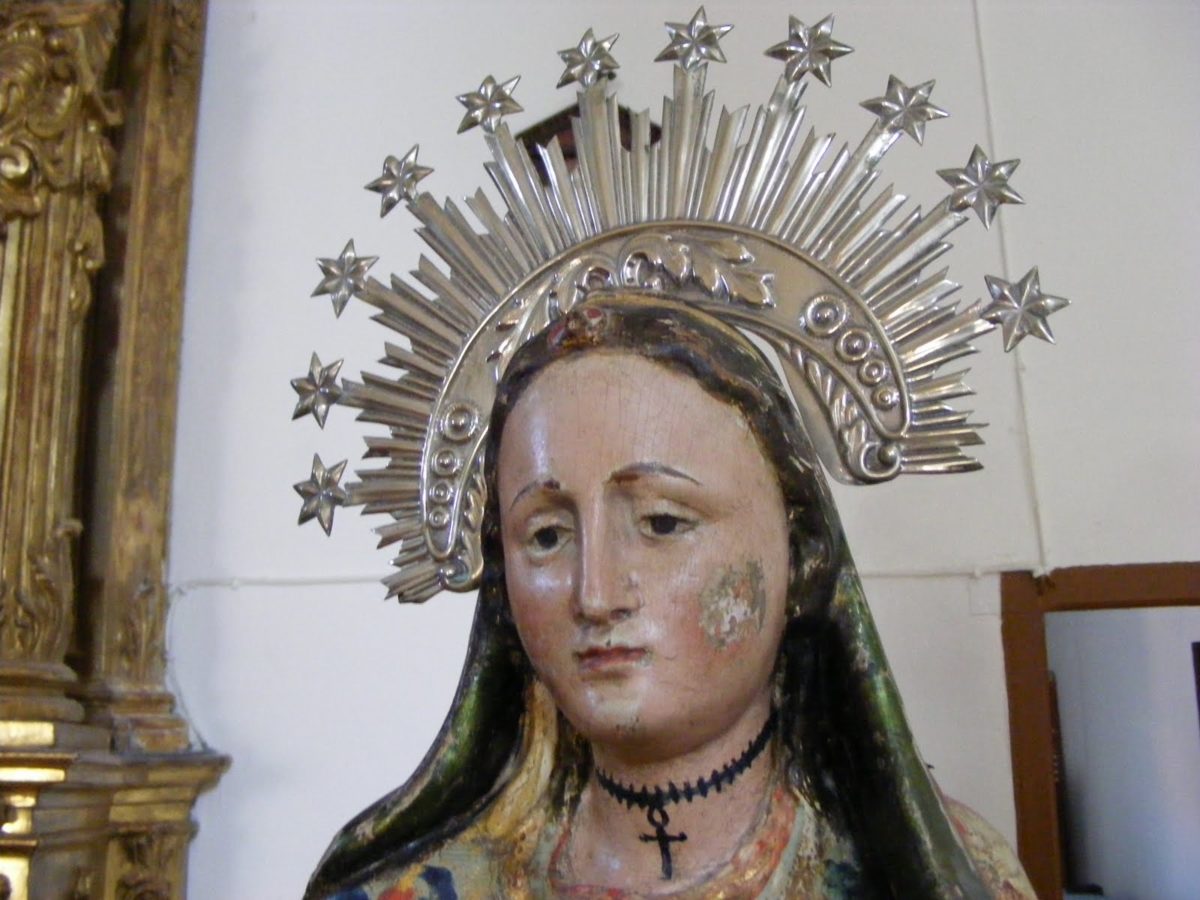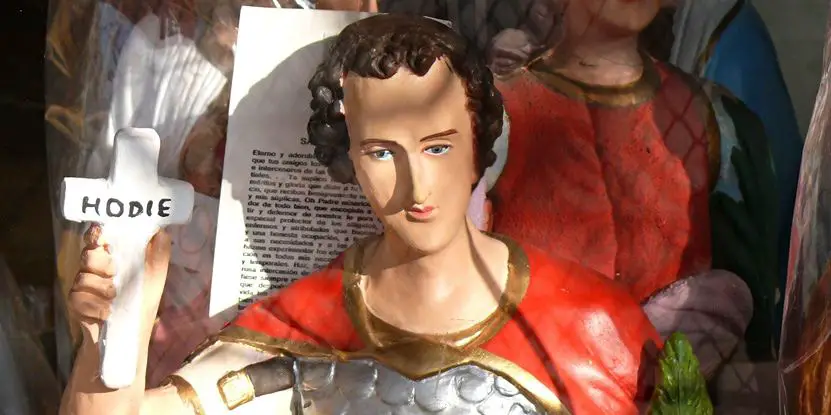The Yaruba religion is a religion of which there is not much information about its origins, only that it originated in West Africa, and through the fusion of the Yaruba religion with the Catholic Christian religion, Santeria was born, in which there is an initiation or consecration called Mano de Orula, which we will talk about in this article. (See also: How to start reading the Christian Bible).

Hand of Orula in Santeria
The battle between good and evil is not of the present, it is an ancestral war, millennia old, and if we take as irrefutable fact what they say in the Christian religion, the battle between good and evil began when Lucifer wanted to take the throne of the Christian God, Jehovah. After that, things would never be the same again.
The truth is that man has always been afraid of death, it is one of the greatest fears he can have, but the fact that he is afraid of death does not mean that it will not come for him. The most certain thing in life is that we are all heading for the same destination, the arms of death.
Mankind has the hope that there is something beyond death, that when they leave this world after their death they can wake up somewhere else and be conscious of themselves, many others are obsessed with immortality. If humanity were to achieve immortality, it would never have to face death again, although, well, I guess nobody ever faces death. The thing is, the fear of death would disappear and I think a lot of things would disappear with it, like some religions.
Consider that there are many religions that promise some kind of life after death, Christians claim that beyond this world there are two destinations: heaven and hell, heaven being the destination for all those who have lived a life on earth according to God’s commandments and who are pure, without blemish; and hell being for those who have not wanted to follow God’s teachings.
The fear of death is one of the reasons why religion was born and man idealised a way to live after death, although I am sure some will disagree with this idea, but they must agree that because they could not explain some natural events, it was easier to say that a deity caused them.
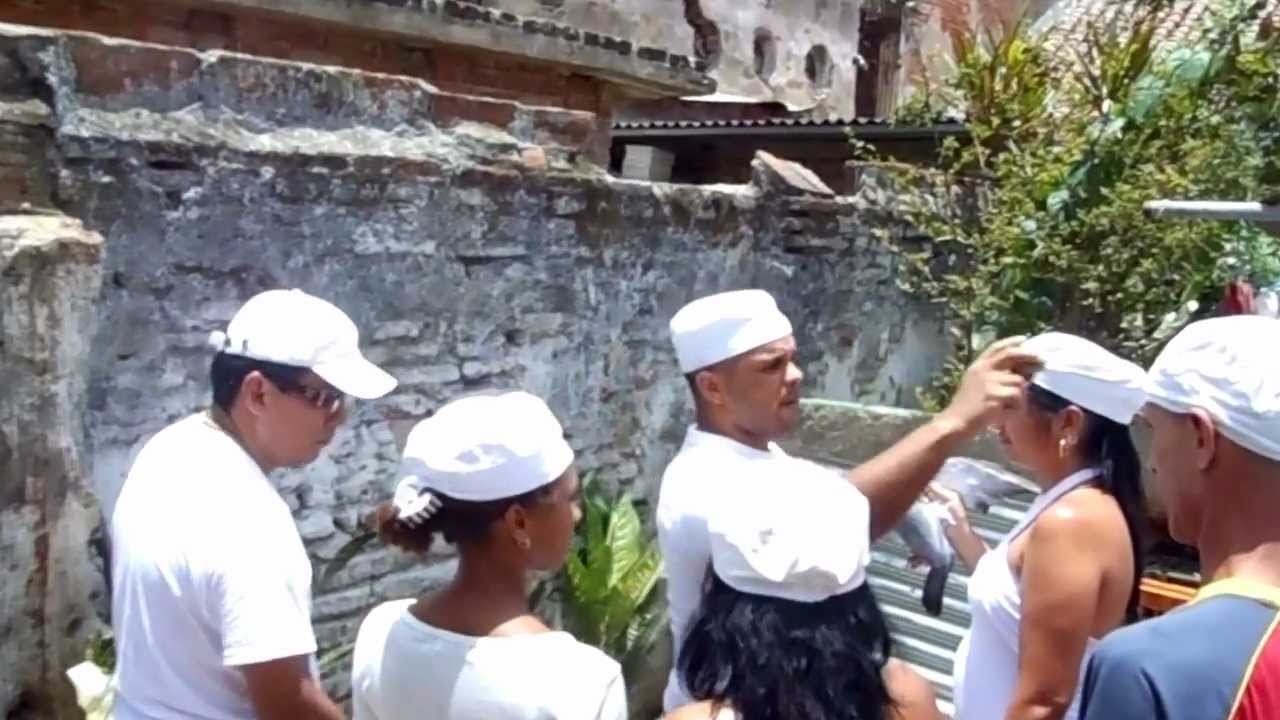
Religions gradually became quite important and gained a large number of followers all over the world, but this brought with it many misfortunes, many deaths, as history shows. The war for territory and to convert as many people as possible to their religion led them to start wars that took the lives of many people.
Beyond the provoked wars, religion prevailed and grew in great numbers all over the world. The Christian religion did this with the help of the army of the Roman Empire after Constantine issued the Edict of Milan. Muslims did it with Muhammad and the other caliphs who followed after his death.
Just as some religions expanded with the help of very powerful and conquering armies, there were other religions that expanded peacefully, such as Buddhism, which is one of the few religions in the world without a holy war in its history.
Incredible as it may seem, it should not be so incredible in reality, there were religions that spread around the world with the help of slavery. Remember, when the whites came to Africa and saw how the blacks worked and saw how hard they worked, they admired them for it.
There was another detail that the whites saw about the blacks and that was that they did not have the same knowledge as them, that is to say they were ignorant, they saw the opportunity to subjugate a working people like donkeys. So they took advantage of the situation to exploit them. The pay was little for the hard work they had to do, but then things got complicated because the whites soon stopped paying the blacks the little they gave them for the work, they started to be slaves and if they disobeyed they were killed or maltreated to death.
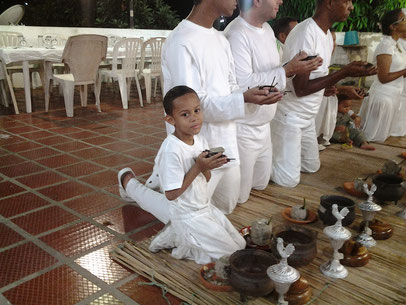
The blacks accepted their harsh reality and did without protest what the whites told them to do, while the whites continued to expand their territories in different parts of the world, colonising and murdering all those who got in their way. The blacks always had their own religion, their own beliefs, which varied from tribe to tribe and region to region, and although many of these indigenous religions or beliefs were very similar, there were certain differences between them. Black people would soon set foot in foreign lands.
They would not enter these lands as foreigners and they would not be well received, these were lands of the Spanish, English and British Crown where they would be used as slaves to do the hardest jobs that the whites could not do because they were too weak and had little resistance. When these black slaves were brought from Africa to South America and Europe, and even to North America, their beliefs, traditions and culture came with them. This was a problem because Christianity was the official religion in most of the imperial territories.
It is no secret that earlier Christians were very extremist in the sense that they did not accept any other religion or God, and anyone who practised another religion or believed in another God was supposedly killed “in the name of God”.
Despite all this, the blacks continued to practice their religions in an unknown way, these beliefs were passed on to the native slaves of each country in South America controlled by the empire, then there was a fusion of beliefs that gave rise to Santeria, that is, the Yaruba religion of the native Africans merged with the Catholic religion, giving rise to Santeria.
There are many gods in Santeria, making it a polytheistic religion. One of the most powerful and important deities is Orula, the god of divination and wisdom. He is regarded as the witness of God. The word Orula is derived from Òrúnmìlà, the name of the prophet who knew the oracle of Ifá.
Remember that Orula, the god of divination and wisdom, is one of the most important gods in Yaruba mythology. Mano” is a reference to a set of 16 palm seeds (Ope Ifá). Initiates must possess one set of these seeds, called Ikin, while Babaláwos have at least two pairs.
When an initiate receives this initiation ceremony, it means that his destiny, his mission, his possibilities and his weaknesses will be revealed to him. According to Yaruba tradition, all worldly beings who come into the world must first kneel before Ọlódùmarè, the god of gods, and choose a destiny to follow during their passage through the earthly world.
The only witness to the whole event is Orula, the god of fate and wisdom, who controls the Ifa oracle. Before approaching the chamber of Ọlódùmarè and in the course of preparing for their journey to earth, most people turn to the celestial Ifa priests for divination and are advised to make a sacrifice so that their plans will go well.
Signs
Ifa signs are formed during advanced divination using the Ifa oracle, or as it is known in the religion, Isefa or Atefa. They are formed when the Ifa priest manipulates the sacred palm seeds, also known as inkin seeds. As indicated by the seeds, the babalow will make eight marks on the consecrated board called Opon Ifa using the sacred powder.
It is important to mention that only the priests of Orula can interpret the signs on the Orula board, nobody else has the preparation or knowledge to carry out such a task, otherwise it would be pure charlatanism. The Babalawo usually uses a consecrated instrument called Opele, also known as Okpele or Okuele, during the divination. This instrument helps the priests to obtain the Ifa signs more easily. These Ifa signs can be obtained by the priests through the sacred seeds or by using the opele.
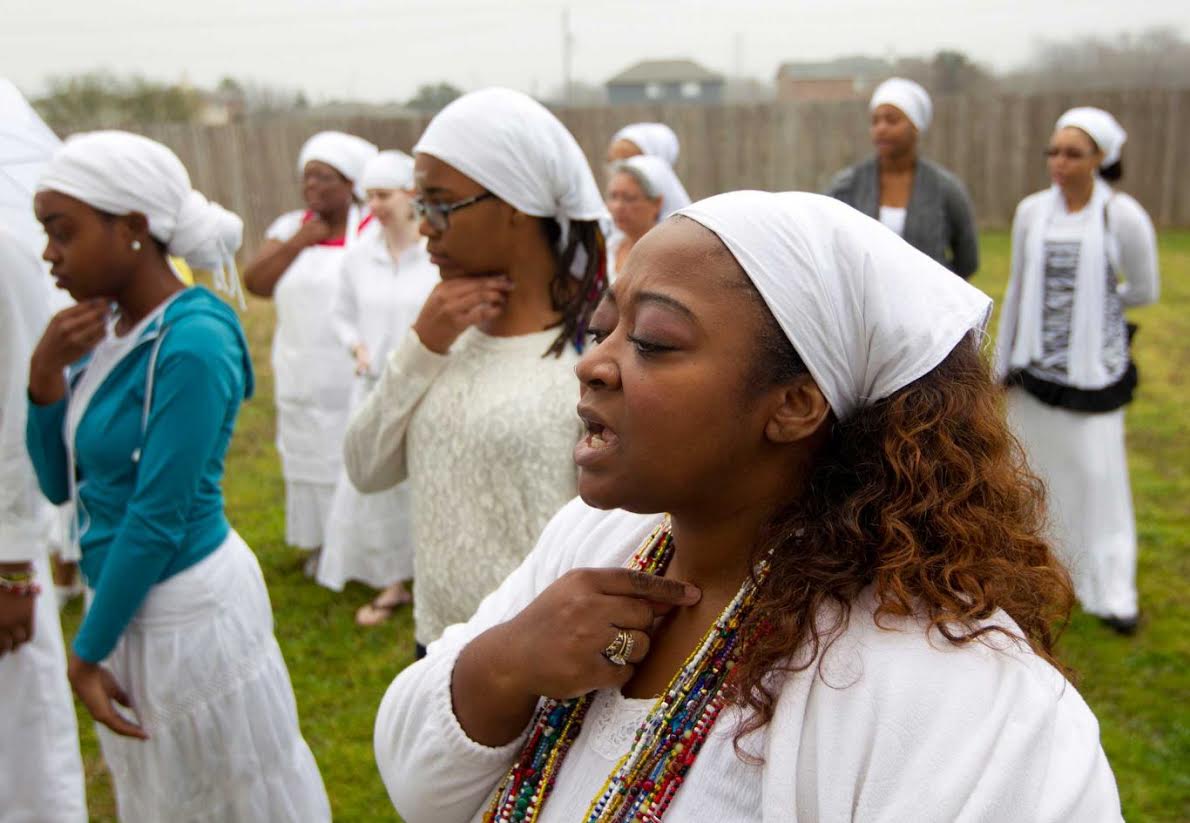
Each ifa sign has a number of stories with specific messages that are interpreted by the babalawo to provide answers or solutions to the problems posed by the person who has hired him for consultation. The babalawo then listens to the problem, associates it with the story or history of the sign and then gives a possible solution to the problem.
The body of Ifa literature is so vast that it would take a lifetime of study to get to know each deity and all their stories correctly and to gain a deep and solid knowledge of the whole Ifa system. It is really almost impossible.
All the Ifa signs are of vital importance in Ifa, but of the whole range of signs the first 16 are of vital importance because when these are combined they give rise to a further 240 secondary figures known as ‘omolowos signs’. These signs collect stories, tales and myths as fabled figures in which the human being and his circumstances form the core.
As the whole of ifa is very broad and complicated, many priests specialise in some of the deities, some of the signs, and dedicate themselves to knowing everything about them, that is, all their stories and the results that can be obtained by interpreting them, offering a specialised service to the client.
The ceremony
If the man is ready to receive the Mano de Ifa, also known as Mano de Orula or Owo Ifa Kan, it means that this is his first step on the path of Ifa. If Orula agrees and sets it down in his Itá without any hindrance, then the person could become a Babalawo. (See also: Why were the early Christians persecuted?)
On the other hand, if the recipient does not have an Ifa path, then his Owo Ifa Kan Ita will become his ultimate guide in making decisions, proceeding and dealing with life and its adversities. It is a guidance that could be strengthened later when he crowns his guardian angel.
The ceremony of the Hand of Orula is performed over three consecutive days, but this does not mean that the godfather who will perform the ceremony for the initiates does not make preparations beforehand. At the time of the ceremony, everything must be perfect for everything to go according to plan.
Day One: On the first day the ceremony begins with the arrival of the babalawos who will be taking part in the ceremony, they are the ones who will be in charge of preparing all the necessary details and everything that is needed to officially begin the ceremonial act. During this first day, a herbal bath is prepared for the people who are to be consecrated, this bath must be used that same day and during the remaining two days of the ceremony, it must be used by the people who are to be consecrated during the ritual.
At the same time, the deceased relatives, ancestors and living relatives are informed to obtain their consent. Once everyone has given their consent and blessing, the ritual continues. One of the most important parts of the initiation ritual is the birth of the deities, for which the ritual of animal sacrifice is used.
Prior to the birth of the saints, another series of acts are performed in the consecration room, which are a fundamental part of the secret ritual of initiation. When the first day of the ceremony is over, the participants return to their homes to take the first herbal bath, which has been prepared beforehand.
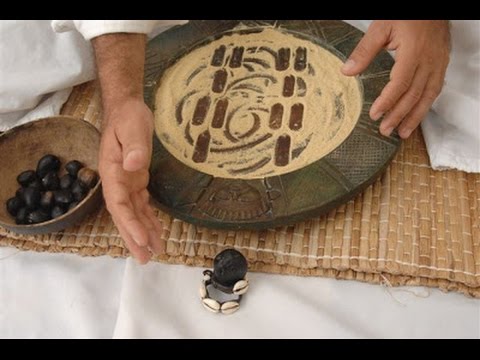
Day Two: On the second day there is no religious ceremony, it is more of a day of rest, but that is because Orula was born the day before during the ceremony, and on the second day Orula observes his children, who must take into account: they must not visit hospitals, they must not have relations, nor drink alcoholic beverages, they must avoid anything that could negatively affect Orula’s character.
It is a day to meditate a lot and clear the mind of anything impure, evil or anything that might disturb the peace of the mind, especially so that Orula is not negatively affected, it is a day of reflection and spiritual recollection.
The third day: The third day of the ceremony is the day of itá, or better known as the day of Orula’s registration. It is the day when the sign of each person to be consecrated in the ceremony is marked and the guardian angel is determined for those who do not yet know their guardian angel.
The ceremony begins in the early hours of the morning to inform the ancestors, deceased and relatives of those to be consecrated of the ceremony and to obtain their approval. Olorun, the god of the sun, is then offered nangareo, a drink made from corn, aguardiente, milk and honey, among other ingredients.
This is followed by breakfast, a time when they sit down to eat and the rest of the religion has the opportunity to get to know the people who are being consecrated during the ceremony, it is a time of sharing and getting to know the new brothers and sisters of the religion. When breakfast is over, it is time for the warriors: Eshu, Ogun, Oshosi and Ozuns, and Orula are informed that the Ita is about to begin and only one person at a time enters in order from most religious to least religious or of age. At the end of each individual Ita, or during the Ita, the Ifa board is cleaned.
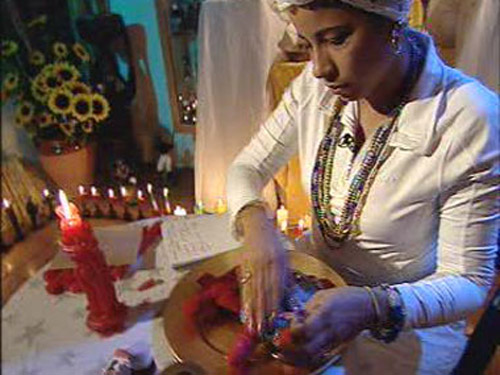
At the end of the Ita ceremony, the Babalawos gather to formally hand over the saints and the Aleyos (initiates) are asked to choose their Oyugbona (second godfather) and then dinner is served to conclude the ceremony.
Receiving
The Aleyos or initiates are the ones who perform the ceremony to consecrate themselves and be seen as a brother within the Yaruba and Santera religion, as well as to receive spiritual protection and extra help for the daily life situations of an ordinary human being. At the time of receiving the Mano de Orula, people should wear appropriate clothing for the occasion, usually white, as white represents purity, cleanliness and innocence. Both women and men should wear white.
Men should wear loose shirts or loose flannels, white trousers and if they wear a cap or hat or something for their head, it should also be white. Women should also wear white, skirts below the knees and not too tight to the body, they can wear necklines that are not too small and all in white. Following this code and having made all the necessary preparations, the whole ceremony to the letter, then the persons to be consecrated will be ready to receive what is the Hand of Orula.
Otura Niko
To speak of Otura Niko is to express an Odun as an important symbol, we will now describe its main characteristics:
- It does not allow spiritualism. This means that it is against the practice of spiritualism.
- He determines who are the people with evil and can identify the lack of conscience in any person, even where a person is spiritually immersed.
He is very perceptive about people whose actions are evil, although it does not come down to that, because evil is not just the bad actions we commit, evil is a kind of energy that Otura Niko can also feel and see in people. On the other hand, he can find the spiritual level of people.
- He has the power to command the male eguns that mark the evil in the light people.
He has a certain authority over the male Egguns, which allows him to mark the evil in good people, i.e. we all have a certain amount of evil deep within us, no matter how good we are. He can also see that degree.
- He does not allow delays, things must be prepared on time, offers must be honoured.
He is quite strict with the use of time, i.e. he does not like delays, schedules must be kept as planned, every offering must be fulfilled on time, as must every commitment.
- All his children must be kind and respectful of all that Orula sends them, it is used to achieve the final step in spiritual realignment.
Treatise
The treatise of the Mano de Orula is an extensive and very specific manual that contains detailed information about the process of the consecration ceremony, as well as the instructions given to the babalawos and the way in which each process must be carried out. We could consider this treatise as a kind of guide that shows us how to perform the prayers, the chants, the suyeres (chants in honour of an Orisha) and the prayers, explaining where each should be performed, at what moment a candle should be lit, a prayer or a dance should be performed.
The first step of this guide is the deep knowledge of Eggun, making a kind of altar where flowers and offerings are placed, then a prayer is said and at the end the candles are lit. Then the priest begins the ceremony by acknowledging Eggun and explaining the ceremony to be performed.
Next, a coconut is presented and fed to the aleyos to spiritually purify them for the sacrifice, which consists of the presentation of a dead dove accompanied by suyeres. Then the hands are washed and prayers are said.

The next step is to place a blanket on the floor and to present all the saints with all the herbs that have been offered, in such a way that more and more suyeres are created and more and more are purified, until the moment comes for the presentation of the central ceremony, in which the aleyo becomes a brother of the religion.
This great treatise also includes the way in which Elegguá can be invoked, with all its songs and prayers dedicated to the deity. On the other hand, women are treated separately, and the ceremonies for them are not the same as those for men. In the treatise we also find the ceremonial indications for women, the types of suyeres are also explained and the treatment of warriors is also explained as far as their offerings and prayers are concerned.
In the last part of the treatise we find instructions on how to put on the bracelet and the necklace, although many consider this to be irrelevant and ignore it completely. In this final part of the treatise, special emphasis is placed on the importance of the ceremony in which the person is totally connected to the energies of the saint, as throughout the treatise, the suyeres accompany each part of the process, some very long, others shorter, depending on the spiritual intention that is required.
This treatise is of vital importance and it is necessary that all those who practise Santeria, the Yaruba religion, know it, just as it is vital that they also know about African mythology in order to be able to help more effectively the people who come to consult them. Every religion in the world has its interesting touch, beyond mysticism, and apart from that, it is good to know about other cultures and other religions of the world that are part of the people and that contribute in some way to the creation of a multicultural society. (See also: History of the first Christians).


